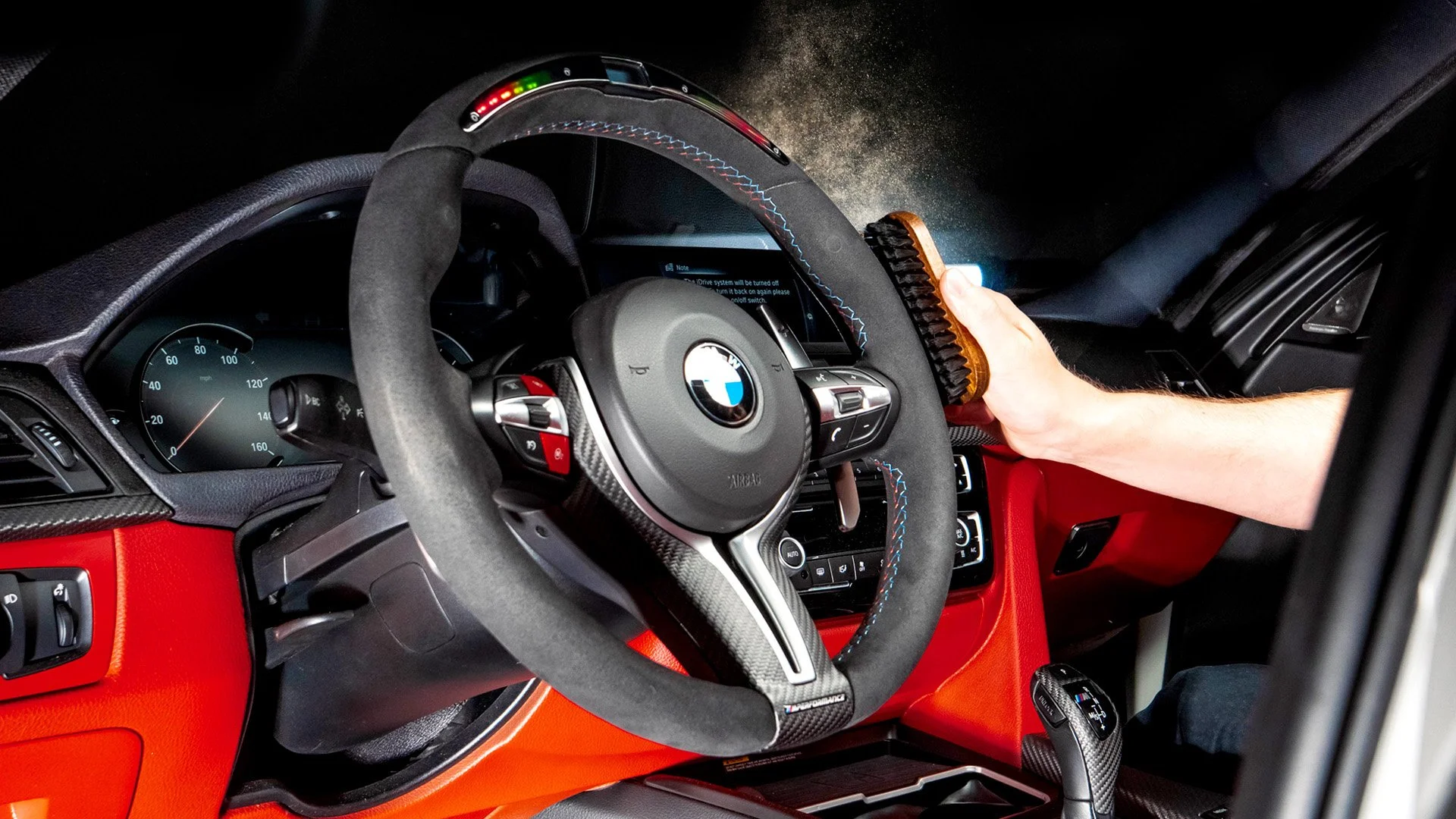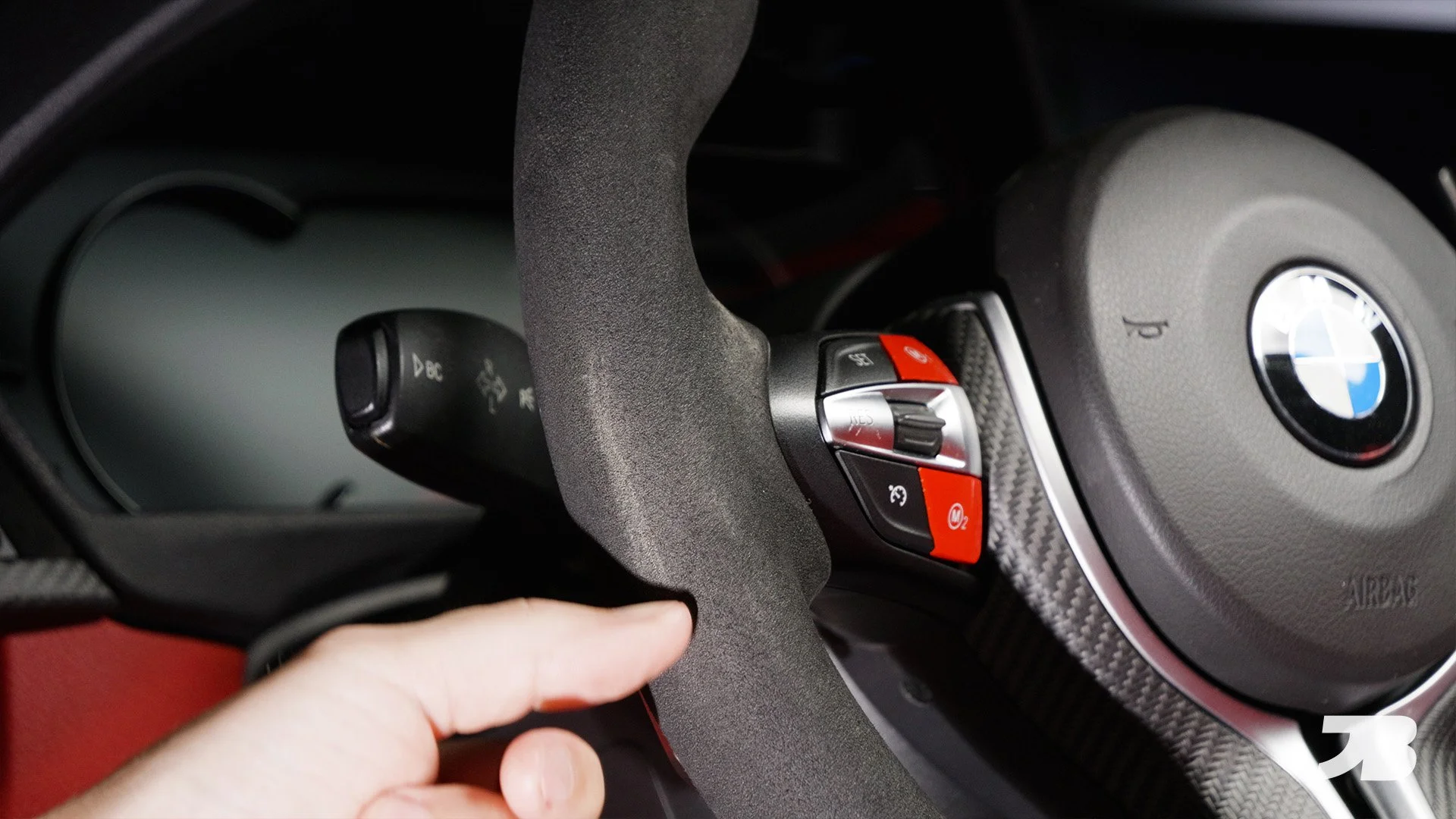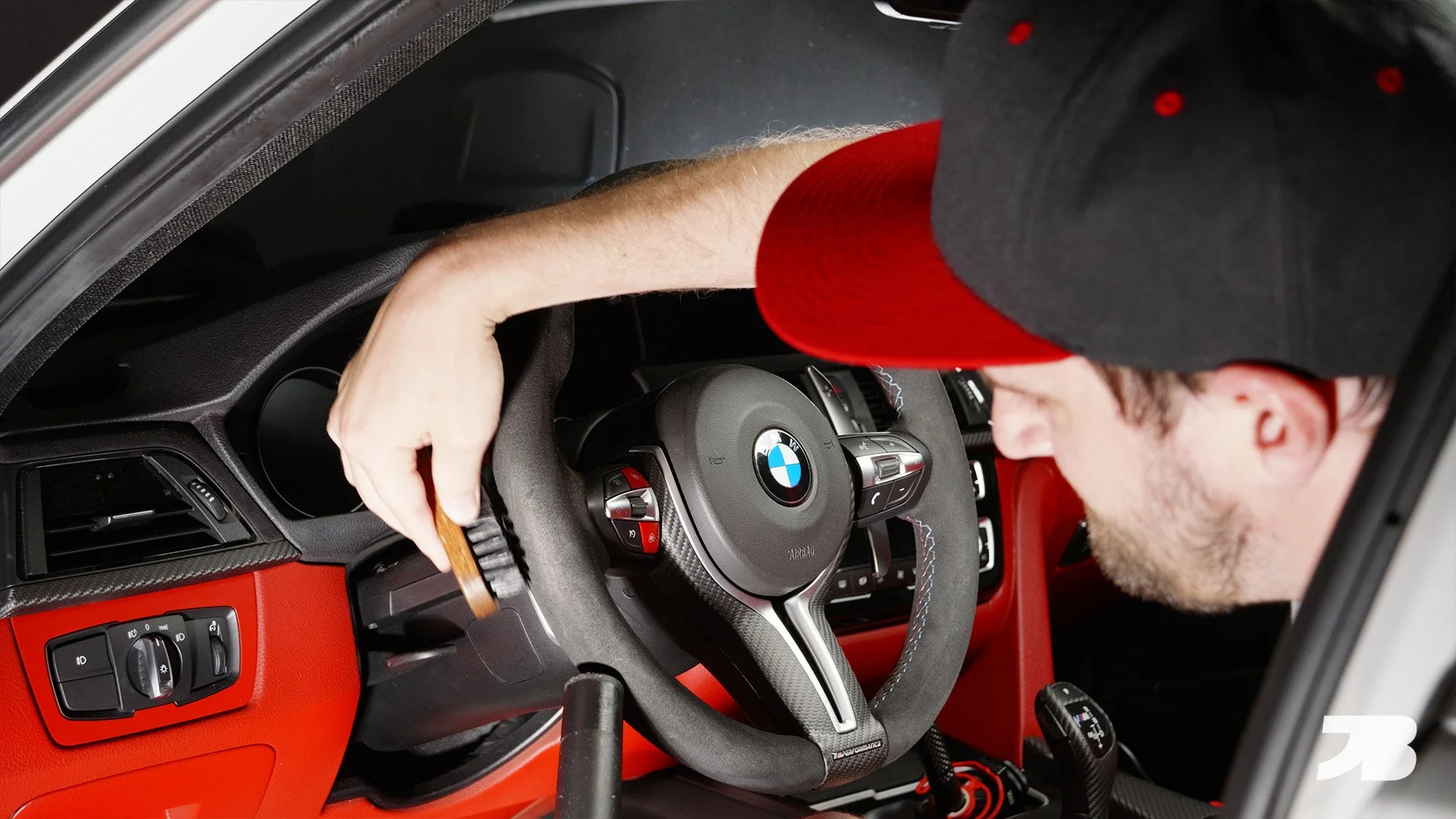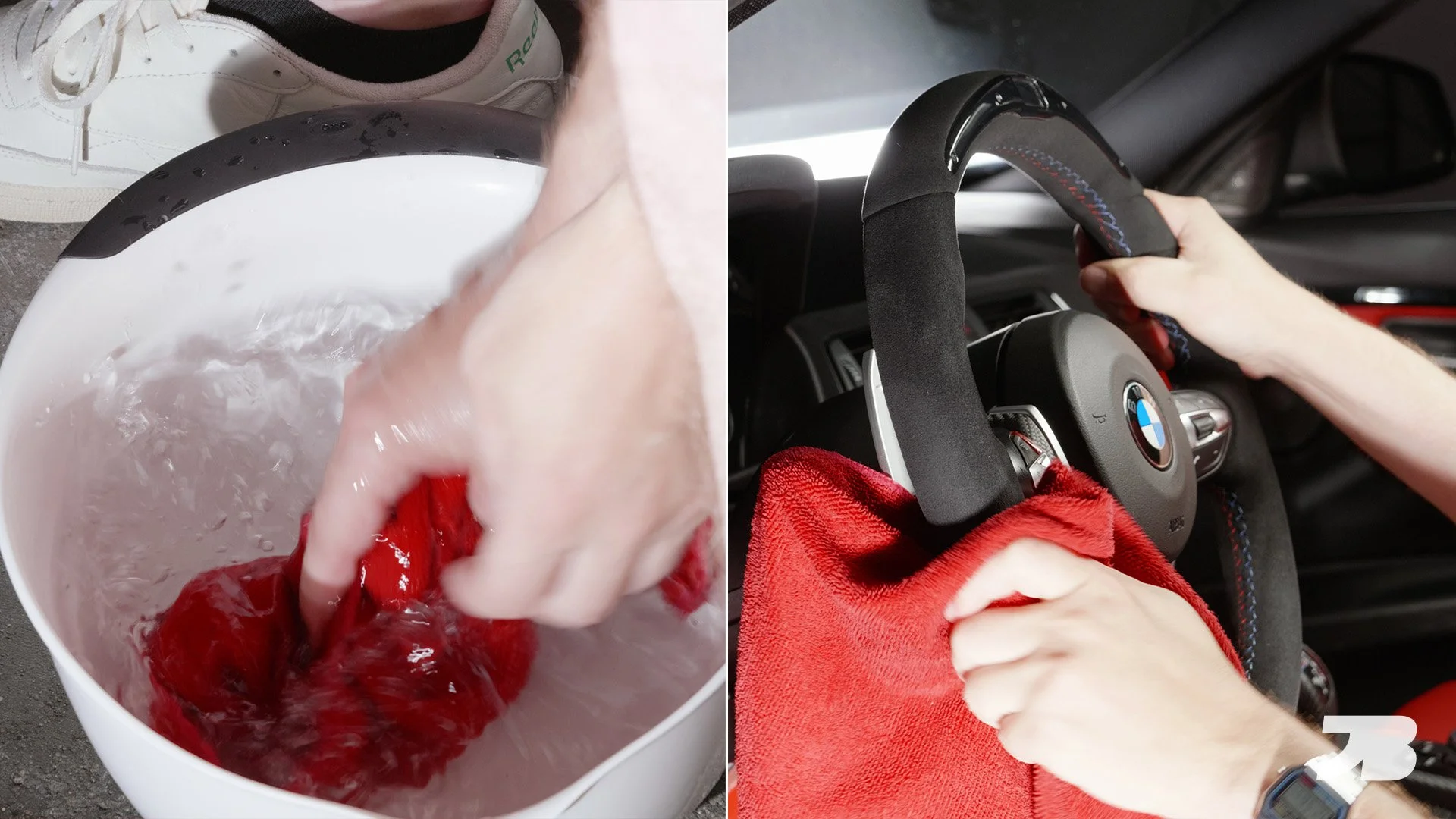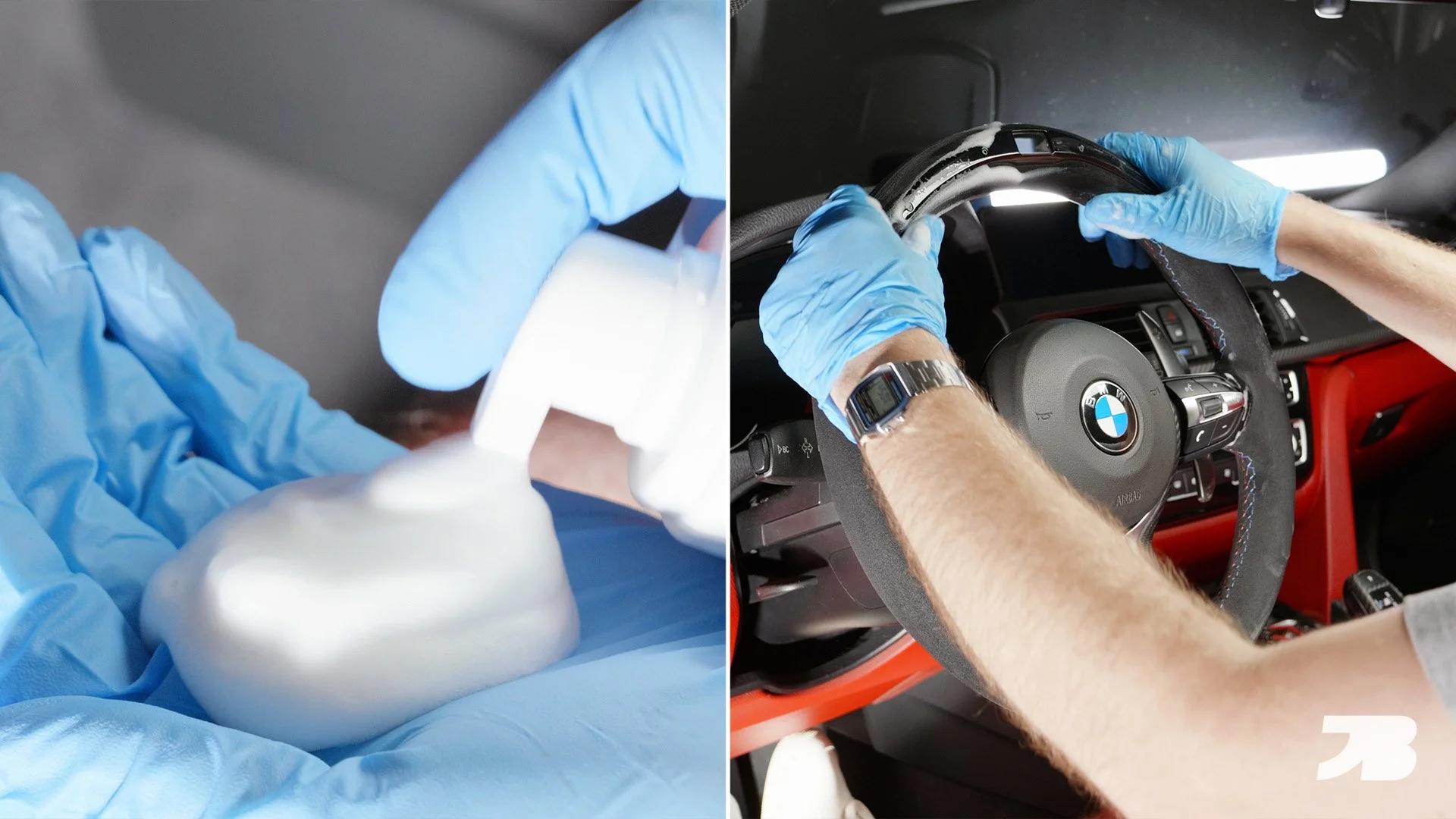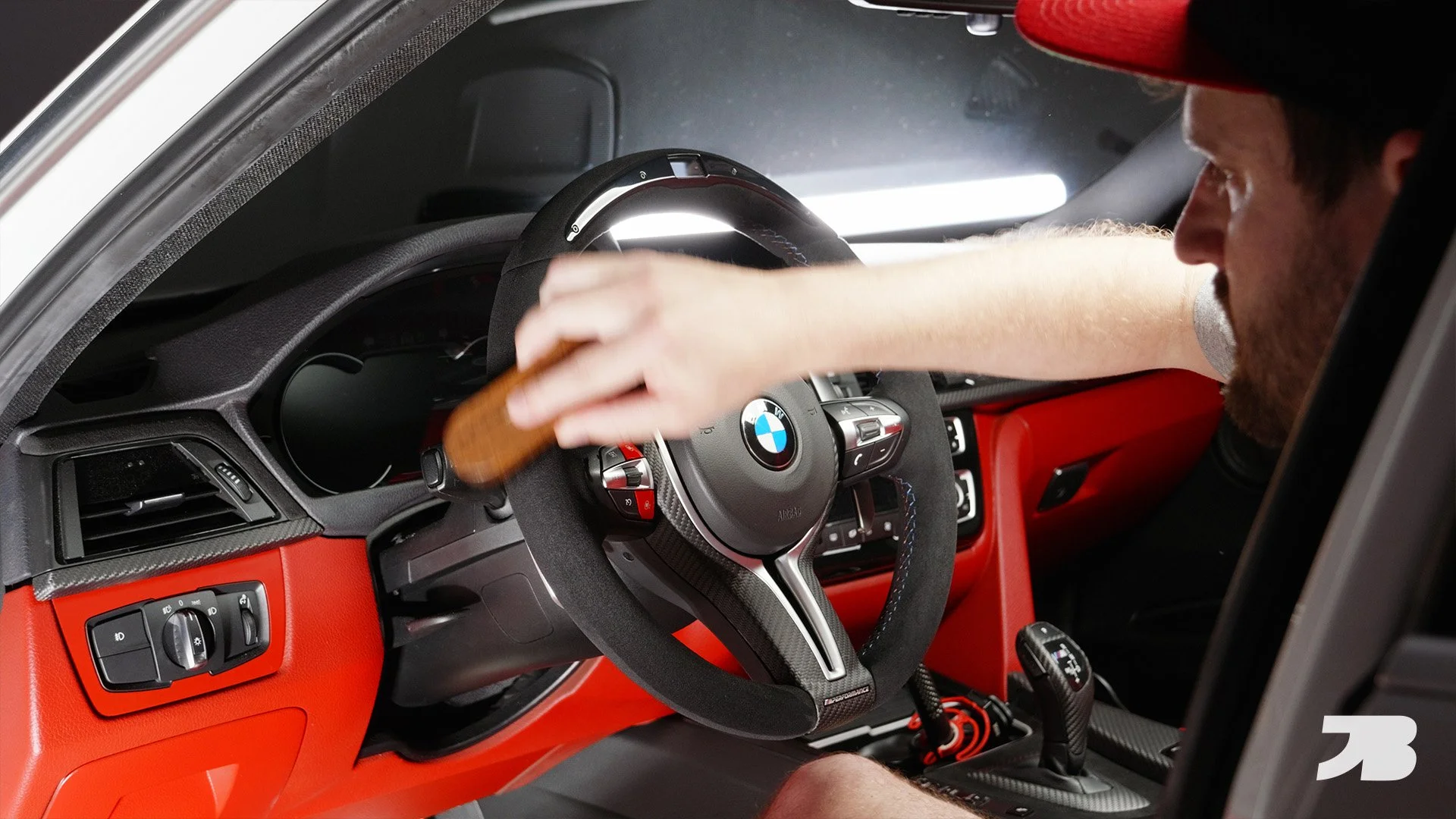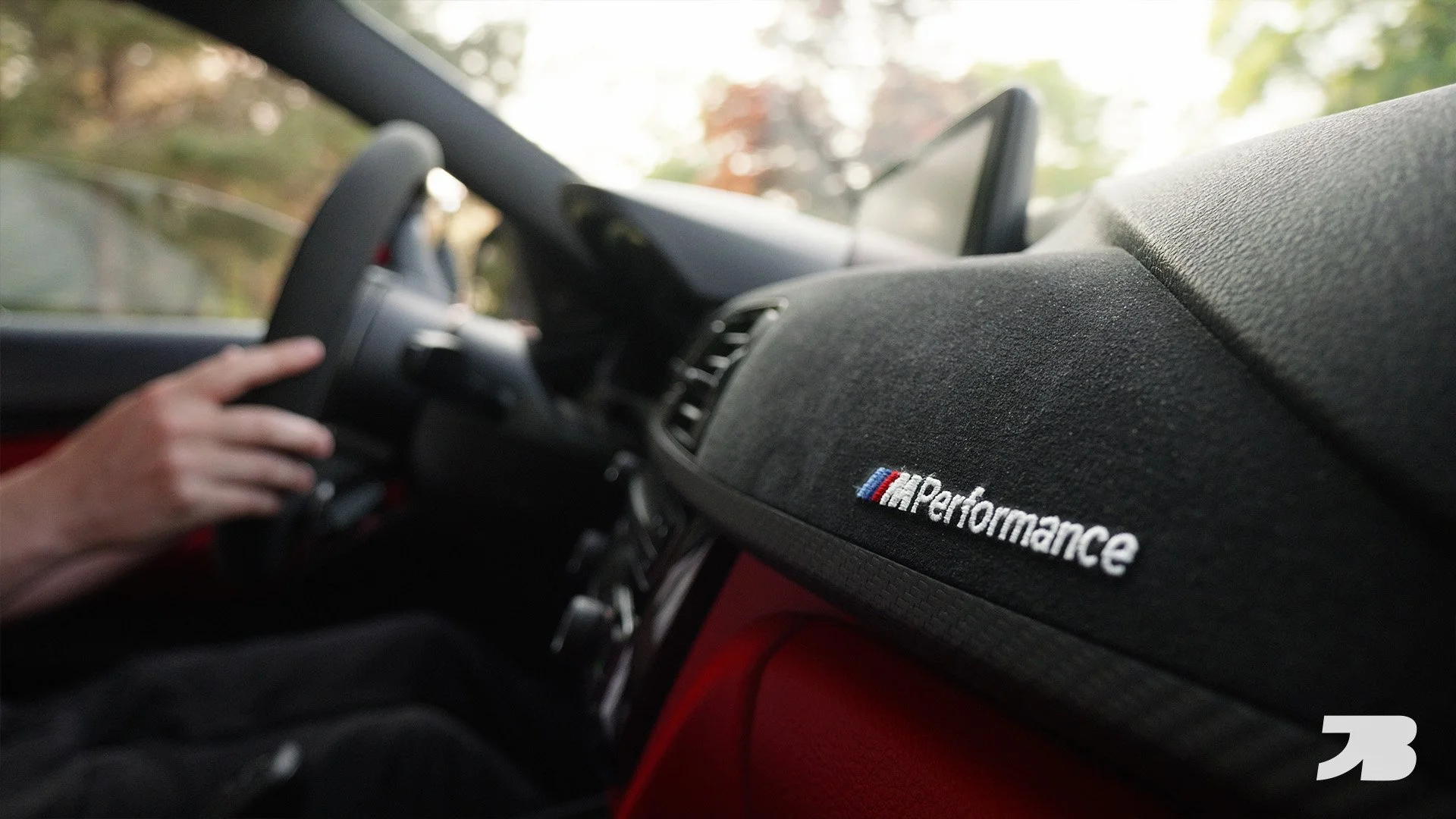Affiliate disclosure: This blog contains affiliate links. If you click my custom link to buy a product, I’ll earn a commission at no extra cost to you. WIN!
What is alcantara?
Alcantara is the car industry’s new favorite interior material, being used on everything from steering wheels to seats and even headliners. But what is it, and how do you take care of it? If you’ve got a car with an Alcantara interior, this blog is for you!
Alcantara® is both the name of the material and the Italian company that makes it. It’s used in everything from furniture to phone cases as a synthetic alternative to suede. It was used in super-car interiors as early as the 1970’s but has recently trickled down into “regular” vehicles like my BMW 3 Series. Note that there are other brands of similar materials like Race-Tex® (used by Porsche) that have similar properties and maintenance regimens.
Before we clean it, it’s important to understand what it is. The material is 68% polyester and 32% polyurethane. In a word - plastic. That means that it will hold up to cleaning and everyday wear better than natural leather suede. In fact, according to Alcantara’s website, clothing made out of this stuff is actually machine washable. While that doesn’t apply to car parts, it should give you an idea of the durability when it comes to deep cleaning.
Step-by-Step Cleaning Guide
Performing the “scratch test”
This is what Alcantara recommends for routine maintenance and care:
Daily - Dust the material with a dry brush, cloth or vacuum.
Weekly - After dusting, wipe the material with a slightly moistened cloth.
Yearly - Deep clean the material with an Alcantara specific cleaner.
For my steering wheel, I like to do the scratch test to determine if it needs a deep clean. If you scratch the side of the wheel near the 9 and 3 position and it leaves a mark, that’s oil and dirt build up from your hands and the wheel needs to be cleaned.
I like to use Sonax Alcantara Cleaner in the pump bottle. You’ll also need an upholstery brush like this one.
Step 1: Use your dry upholstery brush and a vacuum to remove the dust and loose dirt. The more heavy dirt and debris you can knock off in this step, the better.
Step 2: Soak a microfiber towel in hot water and wring it out. Blot your way around the wheel paying special attention to the 9 and 3 positions where your hands tend to rest. Don’t forget about the back side of the wheel.
Step 3: Pump some Sonax Alcantara Cleaner in to your hands and massage it into the wheel.
Step 4: Use an upholstery brush to gently work the product into the Alcantara, then allow it to sit for 5 minutes.
Step 5: Use a microfiber soaked with plain water to remover the product. If your steering wheel is especially dirty, you may need to repeat steps 2-5 more than once.
Step 6: Once the Alcantara is dry, use a brush to help the fibers stand up. It doesn’t necessarily have a directional grain like real suede, but brushing the Alcantara will help restore its original deep black appearance.
The key here is to keep up with regular maintenance cleaning. Don’t let it go for so long that it gets soiled and nasty. For more information on Alcantara care, check out their official cleaning guide on their website here.
Pros and cons of alcantara
So, why would you want Alcantara in your car?
Pros:
Better grip - Alcantara is often used on steering wheels and seats because it’s more grippy than leather or vinyl. Especially if you’re wearing driving gloves.
More premium feeling - The texture of Alcantara can make an interior look and feel more up-market, especially in a car like this 3 Series that had a lot of bare, exposed plastic from the factory.
Comfortable in extreme temperatures - Maybe the biggest advantage in a daily driver is Alcantara won’t feel as hot (or cold) in extreme temperatures.
Moisture resistant - Being that it’s made of plastic fibers, it won’t warp or degrade easily from sweat or cleaning products.
Lightweight - For super-cars with full Alcantara interiors, the material is lighter than leather. While it doesn’t make much difference with the trim pieces I have, I can imagine the weight savings from seats, door cards and headliner would add up.
Cons:
High maintenance - Keeping Alcantara clean requires more frequent upkeep than leather or plastic.
Gets gross - Contact surfaces like steering wheels are prone to collecting oils and dirt from your hands and will eventually feel greasy and slippery if left uncleaned. Even non-touch surfaces become dust and pollen magnets, especially if you like to drive with the windows down like I do.
Wear and tear - The material isn’t as durable as leather, especially on high contact areas like seat side bolsters and steering wheels. Leather can crack and age too, but it can handle a lot more abuse and neglect by comparison.
is alcantara right for you?
If we’re talking about your daily driver, something you’re putting a lot of miles on, I’d personally avoid Alcantara on touch surfaces like steering wheels. If you aren’t going to benefit from the added grip of an Alcantara wheel on a track, I’m not sure it’s worth the extra upkeep for the average person.
In hindsight, I would have preferred a leather steering wheel for my car, but BMW only offered the Race Display Steering Wheel with the Alcantara finish. I don’t hate it, but any time I drive, I’m paranoid about it getting dirty. If you’re someone who generally prefers low maintenance and doesn’t want to invest a lot of time cleaning your car every week, you might want to skip it.

